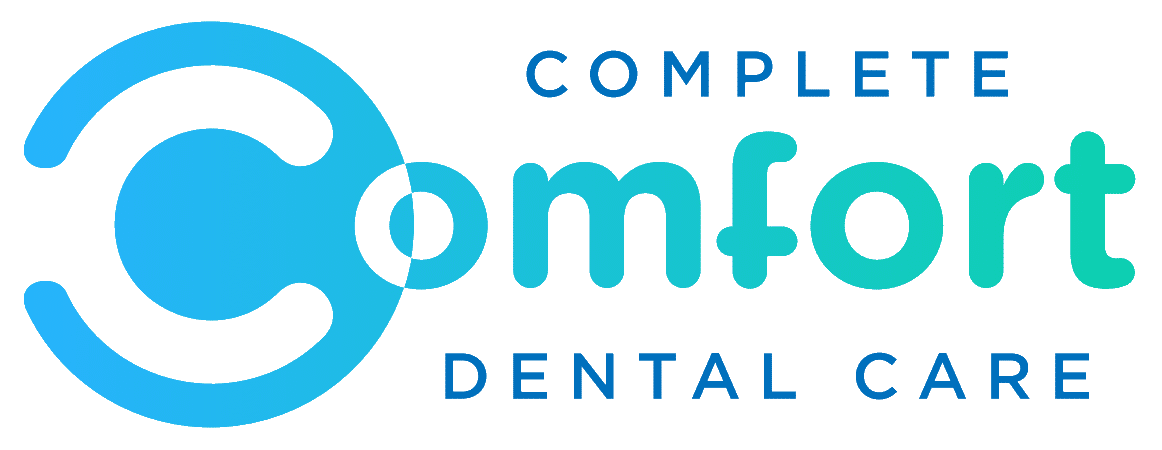Mastering the Art of Evaluation: A Path to Success and Improvement
The Importance of Evaluation in Achieving Success
Evaluation is a critical process that plays a key role in determining the effectiveness and success of various endeavors. Whether in education, business, healthcare, or any other field, evaluation provides valuable insights that inform decision-making and drive improvement.
Evaluating Performance
In the realm of performance evaluation, individuals and organizations assess their progress towards goals and objectives. By measuring key performance indicators (KPIs) and analyzing outcomes, stakeholders can identify areas of strength and areas needing improvement. This data-driven approach enables informed decision-making and strategic planning.
Evaluating Programs and Initiatives
Program evaluation involves assessing the impact and effectiveness of specific projects or initiatives. By collecting data on inputs, outputs, and outcomes, organizations can determine the overall success of their programs. Evaluation results help in identifying best practices, addressing challenges, and optimizing resource allocation.
Evaluating Learning and Development
Evaluation is also crucial in educational settings to measure student learning outcomes and instructional effectiveness. Through assessments, tests, surveys, and feedback mechanisms, educators can gauge student progress, identify learning gaps, and tailor instruction to meet individual needs. Evaluation informs curriculum design, teaching strategies, and educational policies.
The Role of Evaluation in Decision-Making
Effective evaluation provides decision-makers with reliable data and evidence to support their choices. Whether allocating resources, setting priorities, or implementing changes, evaluations offer a systematic approach to assessing impact and informing strategic decisions. By evaluating outcomes against predefined criteria, stakeholders can make informed choices that lead to positive results.
Conclusion
In conclusion, evaluation is a vital process that drives continuous improvement and fosters success across various domains. By systematically assessing performance, programs, learning outcomes, and decision-making processes through evaluation frameworks and methodologies, individuals and organizations can enhance their effectiveness, achieve their goals more efficiently, and strive for excellence.
7 Key Benefits of Evaluation: Driving Insight, Improvement, and Accountability
- Provides valuable insights for informed decision-making
- Identifies areas of strength and weaknesses
- Facilitates continuous improvement and optimization
- Helps in setting realistic goals and objectives
- Measures progress towards desired outcomes
- Enhances accountability and transparency
- Supports evidence-based practices and data-driven strategies
Challenges in Evaluation: Addressing Time, Bias, Expectations, Communication, and Data Balance
- Evaluation can be time-consuming, requiring resources and effort to collect and analyze data.
- Bias or subjectivity in evaluation processes may lead to inaccurate or unfair assessments.
- Evaluation results may not always align with stakeholders’ expectations, causing disappointment or resistance.
- Inadequate communication of evaluation findings can result in misunderstandings or misinterpretations.
- Over-reliance on quantitative data in evaluations may overlook qualitative aspects that are equally important.
Provides valuable insights for informed decision-making
Evaluation serves as a valuable tool by providing insightful data and information that empower individuals and organizations to make informed decisions. Through the systematic assessment of performance, programs, or initiatives, evaluation uncovers key insights that highlight strengths, weaknesses, and areas for improvement. This valuable feedback enables decision-makers to have a clear understanding of the situation at hand, leading to strategic choices that are grounded in evidence and aimed at achieving desired outcomes. By leveraging the insights gained through evaluation, stakeholders can navigate challenges effectively, capitalize on opportunities, and drive continuous improvement towards success.
Identifies areas of strength and weaknesses
Evaluation serves as a valuable tool in identifying areas of strength and weaknesses within various endeavors. By systematically assessing performance, programs, or initiatives, evaluation provides insights into what is working well and where improvements are needed. Recognizing strengths allows for the reinforcement of successful practices, while pinpointing weaknesses presents opportunities for targeted interventions and enhancements. This proactive approach to evaluation enables individuals and organizations to leverage their strengths effectively and address weaknesses strategically, ultimately leading to continuous improvement and sustainable success.
Facilitates continuous improvement and optimization
Evaluation serves as a powerful tool that facilitates continuous improvement and optimization in various aspects of life. By systematically assessing performance, processes, and outcomes, individuals and organizations can identify areas for enhancement and implement strategic changes to drive progress. Through the insights gained from evaluation, stakeholders can refine strategies, streamline operations, and maximize efficiency to achieve optimal results. This ongoing cycle of evaluation and improvement fosters a culture of continuous learning and innovation, ultimately leading to higher levels of success and effectiveness in both personal and professional endeavors.
Helps in setting realistic goals and objectives
Evaluation plays a crucial role in helping individuals and organizations set realistic goals and objectives. By assessing current performance levels, identifying strengths and weaknesses, and understanding external factors that may impact success, evaluation provides valuable insights for goal-setting. Through data-driven analysis, stakeholders can establish achievable targets that are aligned with their capabilities and resources. This proactive approach ensures that goals are challenging yet attainable, leading to increased motivation, improved focus, and ultimately, greater success in reaching desired outcomes.
Measures progress towards desired outcomes
Evaluation serves as a valuable tool in measuring progress towards desired outcomes. By systematically assessing and analyzing performance indicators and outcomes, evaluation provides a clear picture of how effectively goals and objectives are being met. This pro of evaluation enables individuals and organizations to track their advancement, identify areas of success, pinpoint areas needing improvement, and make informed decisions to stay on course towards achieving the desired results. Ultimately, measuring progress through evaluation empowers stakeholders to adjust strategies, allocate resources efficiently, and drive continuous improvement towards successful outcomes.
Enhances accountability and transparency
Evaluation plays a crucial role in enhancing accountability and transparency within organizations and institutions. By systematically assessing performance, outcomes, and processes, evaluation provides a clear and objective measure of success or areas needing improvement. This transparency allows stakeholders to understand the rationale behind decisions, track progress towards goals, and hold individuals or entities accountable for their actions. Through evaluation, organizations can demonstrate their commitment to integrity and openness, fostering trust among stakeholders and ensuring responsible practices are upheld.
Supports evidence-based practices and data-driven strategies
Evaluation plays a crucial role in supporting evidence-based practices and data-driven strategies. By systematically collecting and analyzing data, evaluation provides valuable insights into the effectiveness of various interventions and programs. This empirical evidence helps decision-makers identify what works, what doesn’t, and why. By basing decisions on solid data rather than assumptions or anecdotes, organizations can implement strategies that are proven to be effective and align with their goals. Evaluation ensures that resources are allocated efficiently and that efforts are focused on initiatives with the highest likelihood of success, ultimately leading to improved outcomes and sustainable impact.
Evaluation can be time-consuming, requiring resources and effort to collect and analyze data.
One significant drawback of evaluation is its time-consuming nature, demanding considerable resources and effort to collect and analyze data effectively. The process of gathering relevant information, conducting assessments, and interpreting results can be labor-intensive, potentially diverting attention and resources from other critical tasks. Moreover, the need for meticulous data analysis and interpretation can prolong the evaluation timeline, delaying decision-making processes and impeding timely interventions. This resource-intensive aspect of evaluation underscores the importance of strategic planning and allocation of resources to streamline the evaluation process while maximizing its benefits.
Bias or subjectivity in evaluation processes may lead to inaccurate or unfair assessments.
Bias or subjectivity in evaluation processes can pose a significant con, as they have the potential to skew results and undermine the validity of assessments. When evaluators bring personal biases or subjective judgments into the evaluation process, it can lead to inaccurate or unfair evaluations. This can result in individuals or programs being judged based on factors that are irrelevant to their actual performance or impact, ultimately compromising the integrity and credibility of the evaluation outcomes. Addressing bias and subjectivity in evaluations is crucial to ensure that assessments are objective, reliable, and reflective of true merit.
Evaluation results may not always align with stakeholders’ expectations, causing disappointment or resistance.
One significant drawback of evaluation is that the results obtained may not necessarily align with stakeholders’ expectations, potentially leading to disappointment or resistance. Despite thorough planning and implementation of evaluation processes, unforeseen factors or biases can influence the outcomes, resulting in discrepancies between anticipated and actual results. When stakeholders’ expectations are not met, it can create challenges in accepting the evaluation findings and implementing necessary changes. This discrepancy may trigger resistance to the evaluation process itself or hinder efforts to address identified areas for improvement effectively. It is essential for stakeholders to approach evaluation outcomes with an open mind, viewing them as opportunities for growth and learning rather than as strict judgments of success or failure.
Inadequate communication of evaluation findings can result in misunderstandings or misinterpretations.
Inadequate communication of evaluation findings can lead to misunderstandings or misinterpretations, ultimately undermining the value and impact of the evaluation process. When key findings are not effectively communicated to stakeholders in a clear and concise manner, there is a risk of confusion or misalignment on the significance of results. This lack of clarity can impede decision-making, hinder progress towards improvement goals, and erode trust in the evaluation process. Effective communication is essential to ensure that evaluation findings are properly understood, embraced, and utilized to drive meaningful change and informed decision-making.
Over-reliance on quantitative data in evaluations may overlook qualitative aspects that are equally important.
An inherent con of evaluation is the potential for over-reliance on quantitative data, which may lead to overlooking the qualitative aspects that hold equal importance. While quantitative data provides measurable metrics and numerical insights, it often fails to capture the nuanced and subjective elements that qualitative data can reveal. Qualitative aspects such as stakeholder perspectives, contextual factors, and individual experiences play a crucial role in understanding the full impact and implications of programs or initiatives. Relying solely on quantitative data in evaluations may limit the depth of analysis and hinder a comprehensive understanding of the complexities involved. Striking a balance between quantitative and qualitative data is essential to ensure a holistic and insightful evaluation process.



